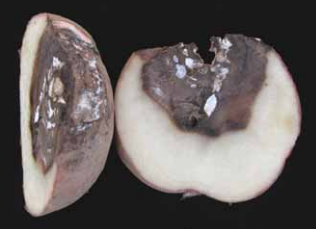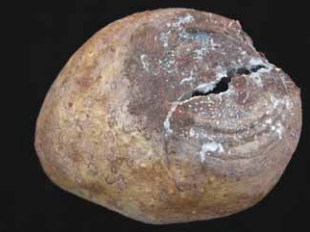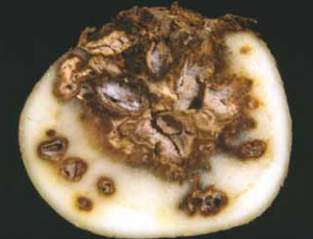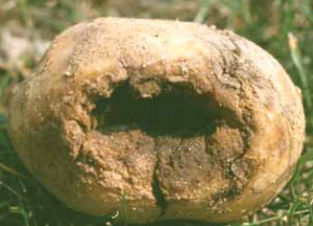Pathogen. Several species of Fusarium are present in most soils. The fungus also survives in infected seed tubers. Fusarium causes seed piece decay, dry rot in storage and plant wilting in the field.
Disease development. Most Fusarium infections occur through wounds and bruises that result from rough handling during harvest, transit or storage. If potatoes are infected at harvest, symptoms are noticeable in storage about a month later. In seed storage facilities where the temperature is below 4°C, tuber lesions do not enlarge, but the fungus remains dormant. As the seed tubers are warmed up in storage or in transit before planting, the fungus will resume growth and the disease will develop rapidly.
Seed pieces infected with dry rot may be partially or completely destroyed in the soil. This results in uneven stands. Single sprouts may emerge from partially infected seed pieces, but the plants are weak and produce few marketable tubers.
Decaying seed pieces are attacked by soft rot bacteria that rot the seed pieces very quickly.
Seed-corn maggots are attracted to decaying seed pieces.
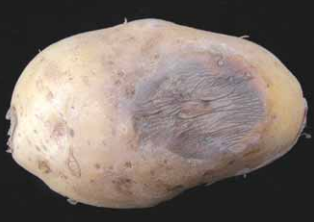
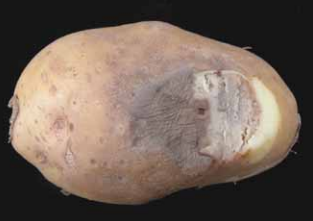
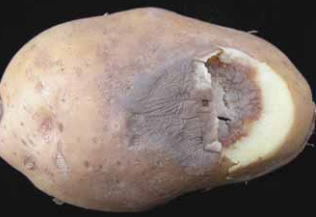
Some Fusarium fungi cause a wet rot. The affected tissue has a jelly-like consistency.
